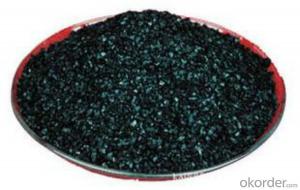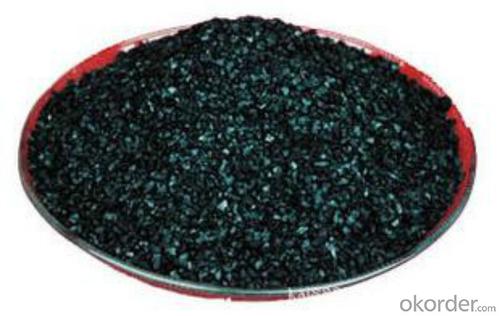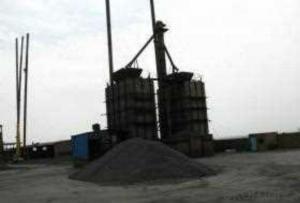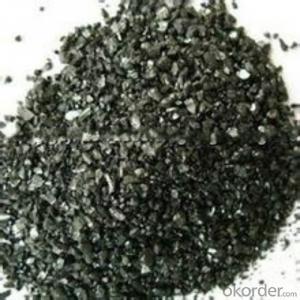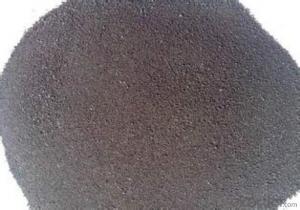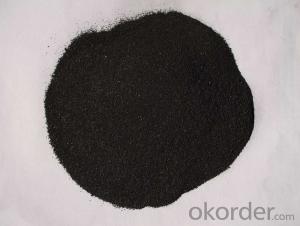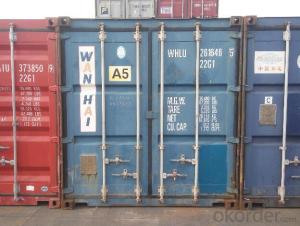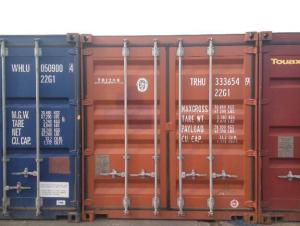S0.5% Calcined anthracite coal as injection coke
- Loading Port:
- Qingdao
- Payment Terms:
- TT OR LC
- Min Order Qty:
- 21.6
- Supply Capability:
- 1016 m.t./month
OKorder Service Pledge
OKorder Financial Service
You Might Also Like
Introduction:
Calcined anthracite can be called carbon additive, carbon raiser, recarburizer, injection coke, charging coke, gas calcined anthracite.It is playing more and more important role in the industry
Best quality Anthracite as raw materials through high temperature calcined at over 2000℃ by the DC electric calciner with results in eliminating the moisture and volatile matter from Anthracite efficiently, improving the density and the electric conductivity and strengthening the mechanical strength and anti-oxidation. It has good characteristics with low ash, low resistivity, low sulphur, high carbon and high density. It is the best material for high quality carbon products. It is used as carbon additive in steel industry or fuel.
Features:
G-High Calcined Anthracite is produced when Anthracite is calcined under the temperature of 1240°C in vertical shaft furnaces. G-High Calcined Anthracite is mainly used in electric steel ovens, water filtering, rust removal in shipbuilding and production of carbon material. Our product is in high and steady quality
Specifications:
F.C.% | 95MIN | 94MIN | 93MIN | 92MIN | 90MIN | 85MIN | 84MIN |
ASH % | 4MAX | 5MAX | 6 MAX | 6.5MAX | 8.5MAX | 12MAX | 13MAX |
V.M.% | 1 MAX | 1MAX | 1.0MAX | 1.5MAX | 1.5MAX | 3 MAX | 3 MAX |
SULFUR % | 0.3MAX | 0.3MAX | 0.3MAX | 0.35MAX | 0.35MAX | 0.5MAX | 0.5MAX |
MOISTURE % | 0.5MAX | 0.5MAX | 0.5MAX | 0.5MAX | 0.5MAX | 1MAX | 1MAX |
Pictures
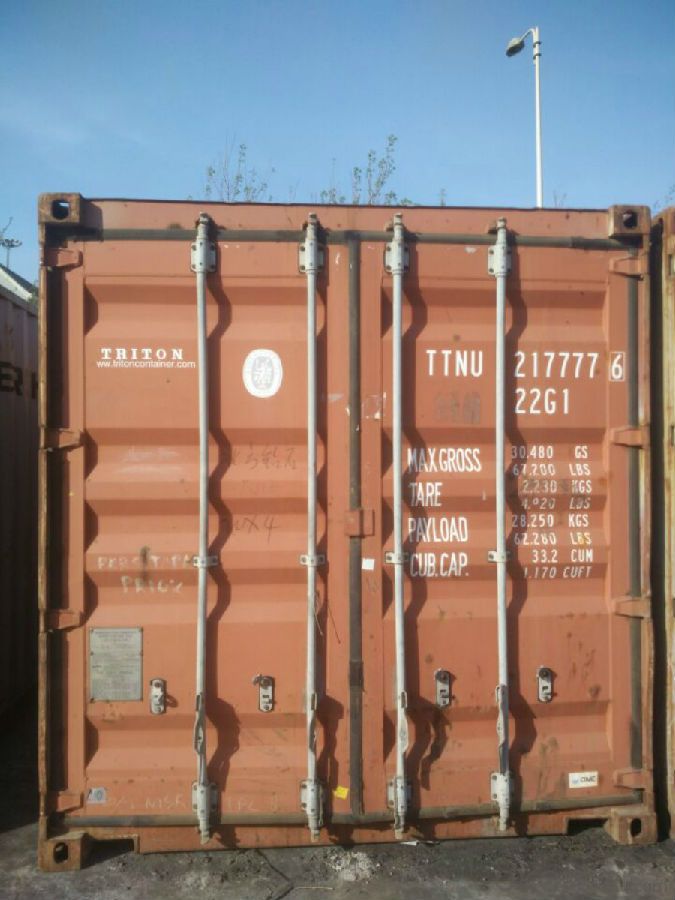
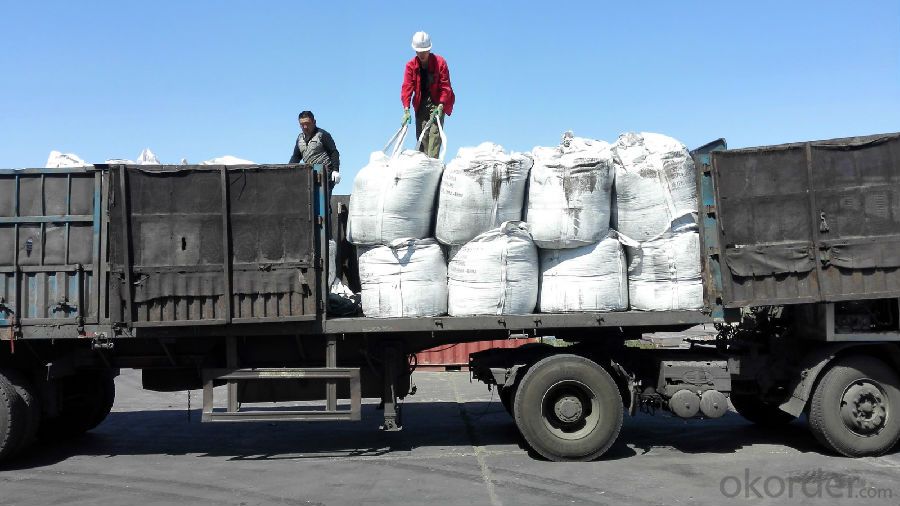
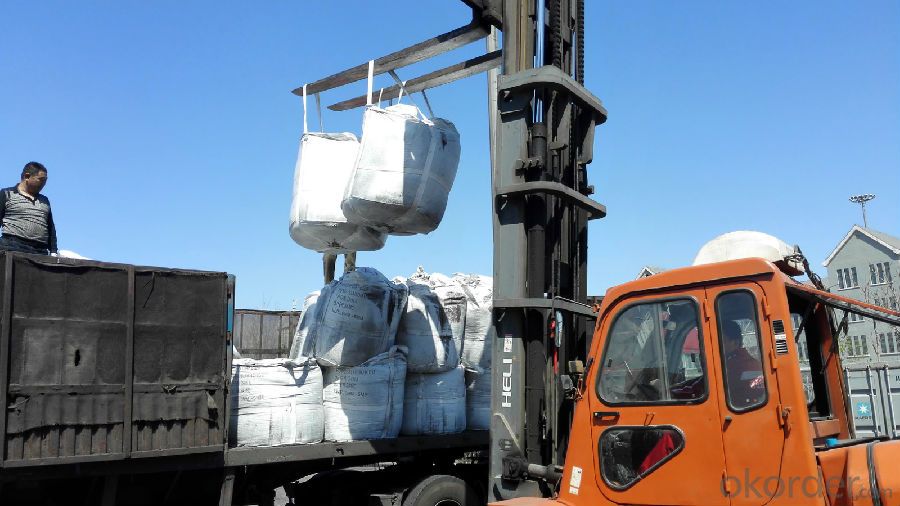
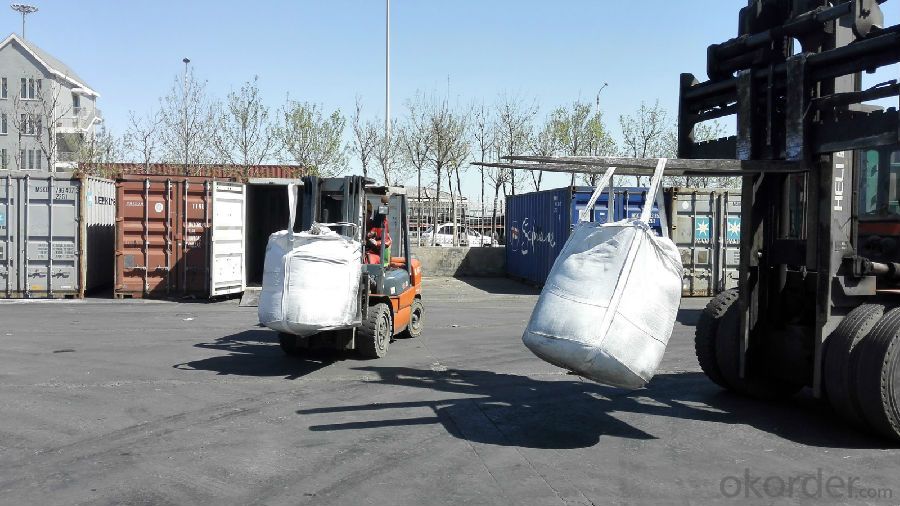
FAQ:
Packing:
(1). Waterproof jumbo bags: 800kgs~1100kgs/ bag according to different grain sizes;
(2). Waterproof PP woven bags / Paper bags: 5kg / 7.5kg / 12.5kg / 20kg / 25kg / 30kg / 50kg small bags;
(3). Small bags into jumbo bags: waterproof PP woven bags / paper bags in 800kg ~1100kg jumbo bags.
Payment terms
20% down payment and 80% against copy of B/L.
Workable LC at sight,
- Q: What is the greenhouse effect of carbon dioxide?
- The greenhouse effect of carbon dioxide refers to the process by which carbon dioxide (CO2) and other greenhouse gases in the Earth's atmosphere trap heat from the sun and contribute to the warming of the planet. These gases act like a blanket, allowing sunlight to pass through but trapping the heat that is reflected back from the Earth's surface. When sunlight reaches the Earth's surface, it warms the land, oceans, and atmosphere. As the Earth re-radiates this heat back into space, greenhouse gases absorb and re-emit some of this energy, preventing it from escaping into space. This process naturally occurs and is essential for maintaining the Earth's temperature within a habitable range, making life as we know it possible. However, human activities, particularly the burning of fossil fuels such as coal, oil, and natural gas, have significantly increased the concentration of carbon dioxide and other greenhouse gases in the atmosphere. This has intensified the greenhouse effect, leading to a rise in global temperatures, commonly referred to as global warming or climate change. The increased levels of carbon dioxide in the atmosphere result in more heat being trapped, creating a greenhouse effect that amplifies the natural warming process. The consequences of this include rising sea levels, more frequent and severe extreme weather events, changes in precipitation patterns, and disruptions to ecosystems and biodiversity. Addressing the greenhouse effect of carbon dioxide and reducing greenhouse gas emissions is crucial in mitigating the impacts of climate change. Efforts to transition to renewable energy sources, increase energy efficiency, and promote sustainable practices are key in reducing carbon dioxide emissions and combating global warming.
- Q: What is the carbon emission of the air conditioner?
- Summer less air-conditioning 1 hours, it will reduce carbon emissions of 0.621kg
- Q: They include a cementite, two cementite, three cementite, eutectic cementite and eutectoid cementite, and compare their temperature, composition and morphology
- A: cementite in iron graphite phase, carbon content more than 4.3%, in L (Fe + Fe3C) two-phase region crystallization of Fe3C as a primary cementite formation temperature in the eutectic temperature (1148 DEG C) above, morphology in large sheets (during eutectic organization). Carbon content from 4.3% to 6.69% is the typical composition range.
- Q: How does carbon dioxide affect the health of marine organisms?
- Carbon dioxide affects the health of marine organisms by increasing ocean acidity, which can harm their shells, skeletons, and reproductive systems. It can also disrupt the balance of marine ecosystems and impact the overall biodiversity and productivity of marine life.
- Q: What is carbon nanomembrane?
- A carbon nanomembrane (CNM) is a thin layer of carbon atoms arranged in a lattice structure, with a thickness of just one atom, making it one of the thinnest materials known. To create CNMs, a precursor material is deposited onto a substrate and then transformed into a pure carbon layer through heat or chemical processes. The unique properties of carbon nanomembranes have generated significant interest in science and technology fields. CNMs are highly impermeable to gases and liquids, making them ideal for applications like gas separation and filtration. They also possess excellent electrical conductivity, making them suitable for electronic devices and sensors. Moreover, carbon nanomembranes can be tailored with specific pore sizes and chemical functionalities, enabling their use in molecular sieving and biological applications. They have shown potential in drug delivery, water purification, and tissue engineering. Additionally, CNMs exhibit impressive mechanical strength and flexibility, providing opportunities for use in lightweight and flexible electronics. In conclusion, carbon nanomembranes offer a versatile and exciting platform for various applications. Ongoing research and development in this field aim to further explore and utilize the unique properties of CNMs to advance different industries.
- Q: What are some natural sources of atmospheric carbon emissions?
- Some natural sources of atmospheric carbon emissions include volcanic activities, forest fires, and decay of organic matter in soil and oceans.
- Q: How dnf advanced carbon ashes?
- That thing is called the advanced furnace rock carbon... Not ash carbon...... It was bought at the mall (sold before, no now), with a success rate plus ten percent.
- Q: What is a carbon electrode? What's the use? What's the current situation in the industry? Try to be specific. Thank you
- Tons of ferrosilicon smelting costs reduced by 300-400 yuan, tons of calcium carbide smelting costs reduced by more than 100 yuan.Carbon electrode is an energy saving and environmental friendly product. It can greatly reduce power consumption and reduce pollution in the use of calcium carbide and ferroalloy ore heating furnaces. It is the replacement product of electrode paste. In the submerged arc furnace with the same capacity, electrode paste self baking electrode compared with the following characteristics: improving smelting furnace production, reduce power consumption and reduce the labor intensity (15-20%; 1 tons of iron smelting alloy consumption of electrode paste carbon electrode about 60kg, consumption is only about 12kg, reduce the operating times of the electrode), simplified production process; to avoid or reduce the self baking electrode frequent "broken soft" and "hard" accidents, improve the working environment, reduce operating costs.
- Q: What are the specifications of carbon fiber cloth?
- First, according to the different carbon fiber precursor, can be divided into:1, PAN based carbon fiber cloth (more than 90% of the market for this kind of carbon fiber cloth);2, viscose based carbon fiber cloth;3, asphalt based carbon fiber clothTwo, according to the different specifications of carbon fiber, can be divided into:1,1K carbon fiber cloth;2,3K carbon fiber cloth, 3,6K carbon fiber cloth;4,12K carbon fiber cloth;Large tow carbon fiber cloth 5,24K and overThree, according to carbon fiber carbonization can be divided into different:1, graphitized carbon fiber cloth, can withstand 2000 - 3000 degrees high temperature;2, carbon fiber cloth, can withstand 1000 degrees or so high temperature,3, pre oxidized carbon fiber cloth can withstand 200 - 300 degrees high temperatureFour, according to the different weaving methods, can be divided into:1, carbon fiber woven cloth, mainly include: plain weave cloth, twill, satin, unidirectional cloth etc.;2, knitted carbon fiber cloth, mainly: warp knitting cloth, weft knitting cloth, round machine cloth (bushing), flat knitting cloth (Luo Wen cloth) and so on;3, woven carbon fiber cloth, mainly: casing, packing, weaving belt, two-dimensional cloth, three-dimensional cloth, three-dimensional woven cloth, etc.;4, carbon fiber prepreg cloth, mainly include: dry wet prepreg; prepreg; prepreg cloth; prepreg; there is no Taub Taub; etc.;5, carbon fiber non-woven fabric, non-woven fabric, carbon fiber felt, carbon felt, including short cut felt, continuous felt, surface felt, needle felt, stitched felt, etc..
- Q: What is the difference between carbon nanomaterials and nano carbon materials?
- Carbon nanomaterials are a general term for carbon nanotubes, carbon nanofibers, and so on. Therefore, there are differences and connections between these two statements.
Send your message to us
S0.5% Calcined anthracite coal as injection coke
- Loading Port:
- Qingdao
- Payment Terms:
- TT OR LC
- Min Order Qty:
- 21.6
- Supply Capability:
- 1016 m.t./month
OKorder Service Pledge
OKorder Financial Service
Similar products
Hot products
Hot Searches
